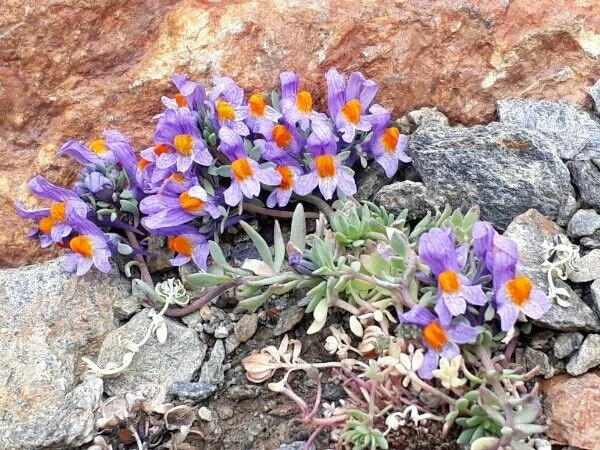Alpine Toadflax
(Linaria alpina)
Alpine Toadflax (Linaria alpina)
/
/

Serge Forgeoy
CC BY-SA 4.0
Image By:
Serge Forgeoy
Recorded By:
Copyright:
CC BY-SA 4.0
Copyright Notice:
Photo by: Serge Forgeoy | License Type: CC BY-SA 4.0 | License URL: https://creativecommons.org/licenses/by-sa/4.0/ | Attribution: Serge Forgeoy (cc-by-sa) | Rights Holder: Serge Forgeoy | Publisher: PlantNet | Date Created: 2017-06-26T22:00Z | Title: Linaria alpina (L.) Mill.: flower | Notes: |




















































Estimated Native Range
Climate Requirements for Dover, New Hampshire
| This Plant | Your Site | Plant Suitability for Your Location | ||
|---|---|---|---|---|
| • Precipitation | 6" - 100" | 43" | Aquatic | Aquatic |
| • High Temp. | 34°F - 92°F | 83°F | Your summer temperatures are normal for this plant. | Excellent |
| • Low Temp. | 2°F - 43°F | 13°F | Your winter temperatures are normal for this plant | Excellent |
This plant should grow well at your location with about N inches per year (Y minutes per month) of irrigation.
Summary
Linaria alpina, commonly known as Alpine Toadflax, is a deciduous perennial herb native to mountainous regions, specifically rocky limestone slopes and alpine meadows in Central and Southern Europe. It typically grows to a height of 0.3-0.7 feet (0.09-0.2 meters) and a width of 0.3 feet (0.09 meters). Alpine Toadflax has a compact growth habit with linear to lance-shaped leaves and produces striking bicolored flowers, with orange and purple hues, during the summer months. These flowers are particularly showy and can add a splash of color to rock gardens and alpine collections.
Alpine Toadflax is valued for its unique flower coloration and its ability to thrive in challenging mountainous environments, making it a suitable choice for rock gardens and areas with poor, well-drained soils. It is often used in cultivation for border fronts, rockeries, and as an ornamental feature in alpine troughs. While it prefers full sun, it can tolerate light shade and requires medium amounts of water with well-draining soil conditions. Gardeners should be aware that although it is not typically prone to serious pest or disease problems, it can suffer from root rot if overwatered or planted in poorly drained soils.CC BY-SA 4.0
Alpine Toadflax is valued for its unique flower coloration and its ability to thrive in challenging mountainous environments, making it a suitable choice for rock gardens and areas with poor, well-drained soils. It is often used in cultivation for border fronts, rockeries, and as an ornamental feature in alpine troughs. While it prefers full sun, it can tolerate light shade and requires medium amounts of water with well-draining soil conditions. Gardeners should be aware that although it is not typically prone to serious pest or disease problems, it can suffer from root rot if overwatered or planted in poorly drained soils.CC BY-SA 4.0
Plant Description
- Plant Type: Herb
- Height: 0.3-0.7 feet
- Width: 0.129-0.3 feet
- Growth Rate: Moderate
- Flower Color: Orange, Purple
- Flowering Season: Summer
- Leaf Retention: Deciduous
Growth Requirements
- Sun: Full Sun
- Water: Medium
- Drainage: Fast
Common Uses
Bee Garden, Bird Garden, Butterfly Garden, Hummingbird Garden, Low Maintenance, Rock Garden, Showy Flowers
Natural Habitat
Rocky limestone slopes and alpine meadows in Central and Southern Europe
Other Names
Common Names: Alpen-Leinkraut, Alpsporre
Scientific Names: Linaria alpina, Linaria alpina f. benearnensis
GBIF Accepted Name: Linaria alpina (L.) Mill.